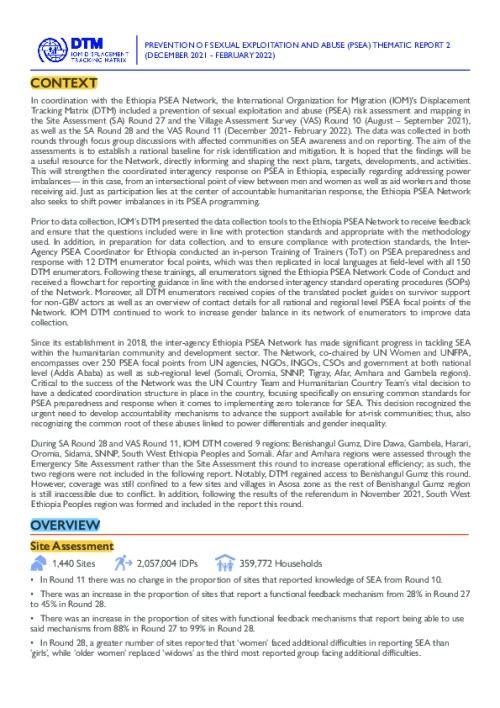
Ethiopia DTM Prevention of Sexual Exploitation and Abuse (PSEA) Thematic Report (December 2021 - February 2022)
In coordination with the Ethiopia PSEA Network, the International Organization for Migration (IOM)'s Displacement Tracking Matrix (DTM) included a prevention of sexual exploitation and abuse (PSEA) risk assessment and mapping in the Site Assessment (SA) Round 27 and the Village Assessment Survey (VAS) Round 10 (August – September 2021), as well as the SA Round 28 and the VAS Round 11 (December 2021- February 2022). The data was collected in both rounds through focus group discussions with affected communities on SEA awareness and on reporting. The aim of the assessments is to establish a national baseline for risk identification and mitigation. It is hoped that the findings will be a useful resource for the Network, directly informing and shaping the next plans, targets, developments, and activities. This will strengthen the coordinated interagency response on PSEA in Ethiopia, especially regarding addressing power imbalances— in this case, from an intersectional point of view between men and women as well as aid workers and those receiving aid. Just as participation lies at the center of accountable humanitarian response, the Ethiopia PSEA Network also seeks to shift power imbalances in its PSEA programming.